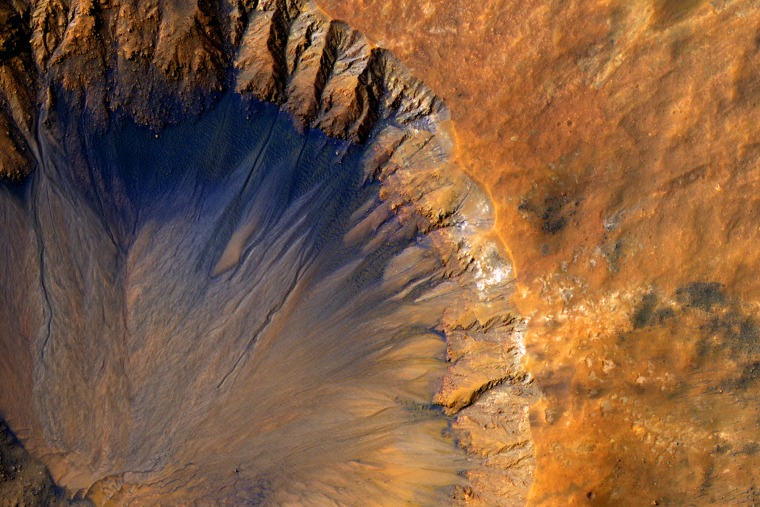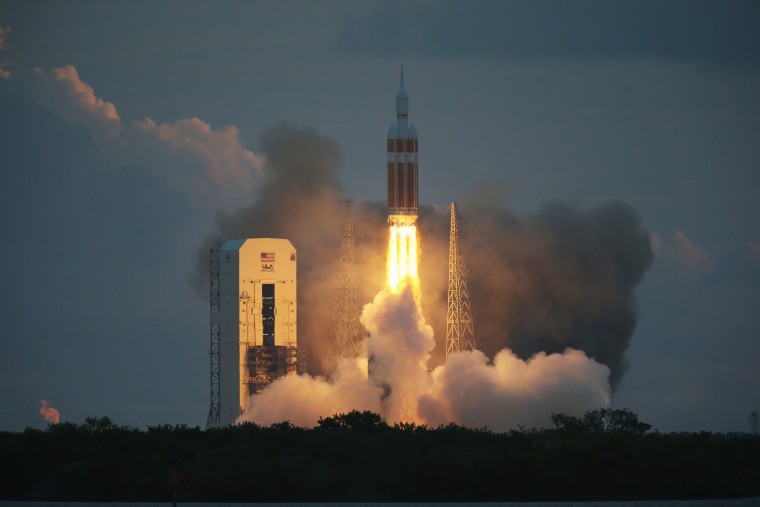In many ways, humankind’s journey to Mars begins in the classroom.
Last month, as NASA’s New Horizons spacecraft sent back the most vivid images we’ve ever seen of Pluto, a new generation of children across the world decided that they will be astronauts, astronomers, and engineers when they grow up. But with our current reality, only some of those children will have the opportunity to fully pursue those dreams.
Today’s American students are part of the “space generation” -- for whom the moon landing of 1969 feels like ancient history. They are growing up in times when astronauts from many nations fly together in space every single day, and when our president has challenged us to send astronauts to Mars in the 2030s.
In 2013, there were eleven states where not a single black student took the AP Computer science exam.'
At Teach for America and NASA, we recognize that we need our young people to innovate, to dream, and to lead us into the next phase of national discovery. That’s why both of our organizations are committed to leveraging the power of our nation’s diversity, and helping every American child reach her or his potential. It’s also why, in particular, we’re committed to making sure all students have the background in Science, Technology, Engineering and Math (STEM) to excel in today’s global economy.
As a second-generation Mexican-American from one of the poorest counties in the nation, and an African-American who grew up during the days of legal segregation, both of us beat the odds when we had the opportunity to graduate from DePauw University and the United States Naval Academy, respectively.
But too many American students, particularly those of color and from low-income communities, still lack access to the educational opportunity they need to succeed in school. Lacking early exposure to STEM means that too few have the chance to pursue these fields later on.
The reality is that we still have a ways to go. When only about 6% of our STEM workforce is black, 6.5% Latino, and fewer than 1% Native American or Alaska Native, it’s clear we have more work to do.
These disparities start early on -- we see them in the classroom as much as the workplace:

In 2013, there were eleven states where not a single black student took the AP Computer science exam. There were eight states where not a single Latino student took it. And there were two states where not a single female student took the exam. Taking the AP computer science exam increases a student’s likelihood of majoring in computer science eight times over. It’s no surprise, then, that we see far fewer women, African-Americans, or Latinos graduating with STEM degrees or landing STEM careers than their white male peers.
We need all kids -- not just white students, not just male students -- to have the opportunity to dream big and be the leaders in STEM careers our nation needs.
We’re both convinced that education is at the core of expanding this opportunity to all Americans. At NASA, we often hear from our astronauts, scientists, and inventors that educators helped shaped their path. They speak of the librarian, the principal, the coach, the teacher -- someone who gave them the inspiration to dream and the tools to help make their dreams a reality. Research tells us that having high-quality teachers in STEM classrooms is critical to closing the gap in STEM opportunity, yet teaching positions in these fields remain empty each school year -- specifically in low-income communities.
Teach For America is committed to being part of the change -- it’s among the largest providers of STEM educators in the nation. Since 2006, the organization’s dedicated STEM Initiative has grown its force of STEM corps member by more than 400%. Last school year, more than 3,000 corps members taught secondary STEM in low-income rural and urban schools across 50 regions, and research has shown they’re making a positive impact.
At NASA we’re committed to working with these corps members and their fellow educators as they work to inspire this “space generation” to pursue studies and careers in the STEM disciplines.
At both organizations, we’re reaching for new heights. At Teach For America we are committed to working toward educational excellence and equity in this nation within our lifetime. At NASA, we’re on a Journey to Mars, and a new consensus is emerging in the scientific community around our plan and timetable for sending American astronauts to the Red Planet by the 2030s.
If these goals sound ambitious, it’s because they are. We’re inspired by that. Fifty years ago, nobody would’ve said a Latina woman could be the co-CEO of an organization 50,000 strong. Fifty years ago, folks wouldn’t have believed that a child of segregated South Carolina would go on to fly four missions into space and later serve as the head of NASA. Fifty years before that, folks would’ve laughed if you’d said that they’d see a man land on the moon.
And fifty years from now, when every child has access to an excellent education, and human beings are using Mars as a stepping stone to the rest of the solar system, we’ll thank the educators that helped make that future a reality.
Elisa Villanueva Beard is co-CEO of Teach for America. Charles Bolden is Administrator of NASA, a retired United States Marine Corps Major General, and former NASA astronaut.
